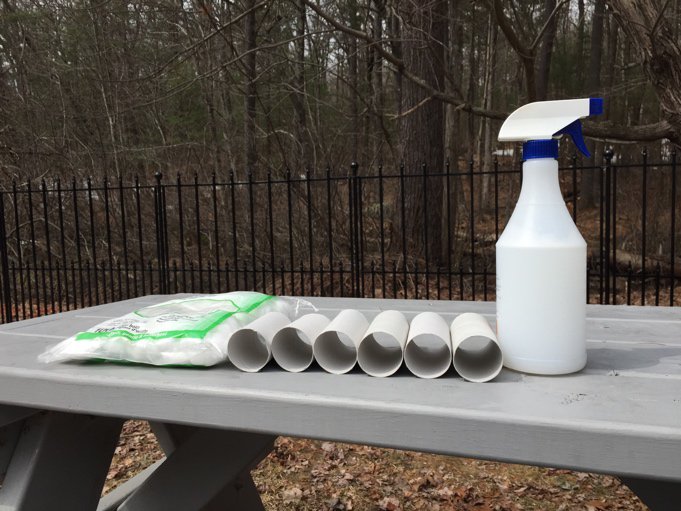What Are Tick Tubes?
Tick tubes are a great first line of defense against nature’s Lyme-carrying nasties. If you live in an area where there are lots of ticks and/or live very close to the woods, it may make sense to use tick tubes to reduce the tick population. The use of tick tubes can reduce the tick population by up to 90%, making it one of the most effective tick control methods available and the first line of defense in the formation of a tick repellent yard…
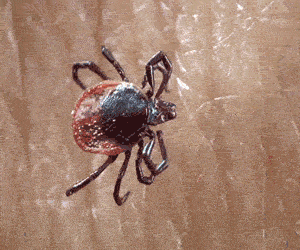
How do they work?
Tick tubes use another pest (mice) to poison the ticks. Ticks reproduce in mice nests and then use the mice as transport to get all over your yard. The tick tubes contain cotton balls laced with a poison called Permethrin.
Permethrin is harmless to the mice but kills ticks very effectively. The mice find the cotton balls in the tubes and carry them back to use as a nice, fluffy addition to their nests, killing all the young ticks on contact.
To use them, you place the tubes a few feet past your yard line (into the woods, tall grass, etc.) and put one down every 10 feet around the area you want to protect against ticks. You deploy them twice a year when the mice are mating and forming nests, which in the Northeastern US is April and July…
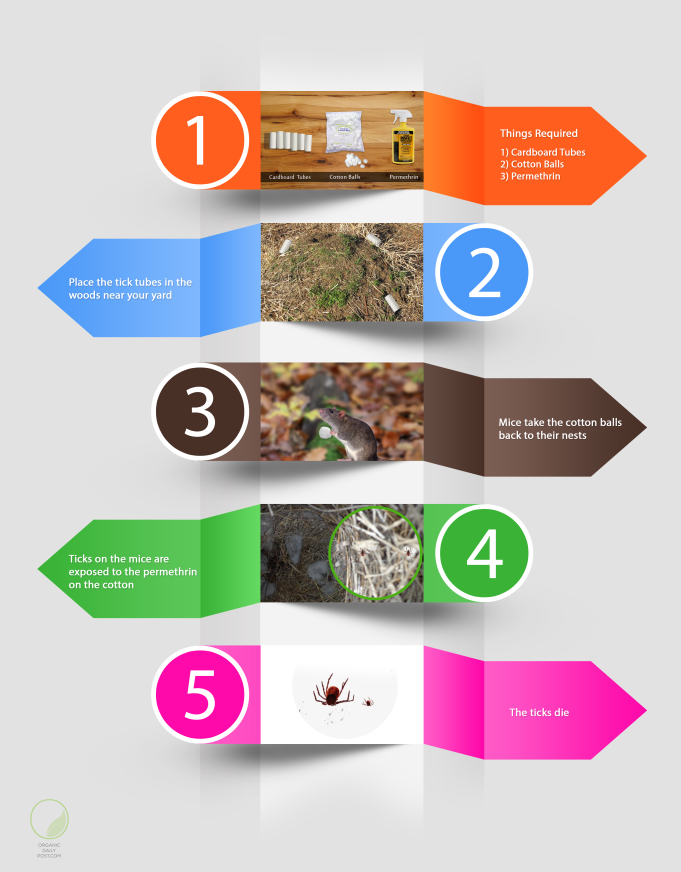
A Word About Permethrin
While deadly to ticks, a benefit of Permethrin is that it has low mammalian toxicity. That is, it’snot very toxic to humans and other mammals. In fact, a form of it is used to treat Scabies infections in humans.
That said, the same Cornell study linked above also stated “…contact with eyes, skin, or clothing should be avoided and handlers of permethrin should wash thoroughly after handling. Breathing of the spray mist or vapors of permethrin by workers should be avoided.”
So, it’s still poison folks. Wear a mask and rubber gloves when handling it and make sure not to inhale it.
We’re very concerned with environmental toxins here at the Organic Daily Post, so we want you to know what you’re dealing with. Below are the first aid instructions for Permethrin, they do a pretty good job of letting you know what’s up…
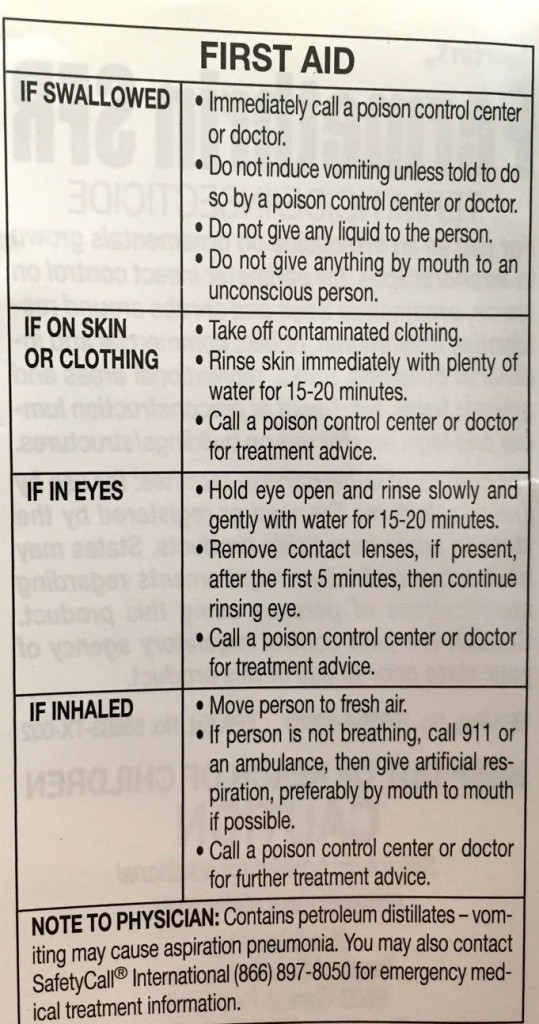
The tubes contain the poison and target it specifically to ticks, which is important. Permethrin can be used more broadly but it is controversial because it’s very dangerous to cats, fish and insects in general including beneficial ones like bees. So simply spraying it on your lawn would be ecologically hostile… keep in the tubes.
Permethrin Kills These Insects:
- Ants
- Armyworms
- Bees
- Beetles
- Borers
- Boxelder Bugs
- Centipedes
- Chinchbugs
- Cockroaches
- Crickets
- Earwigs
- Elm Leaf Beetles
- Fire Ants
- Fleas
- Flies
- Firebrats
- Gypsy Moths
- Millipedes
- Pillbugs
- Scorpions
- Silverfish
- Sod Webworms
- Sowbugs
- Spiders
- Ticks
- Wasps
Where to Find Tick Tubes
By far the easiest way to get tick tubes is to buy them online. For several years I bought Damminix tick tubes on Amazon.com. You can buy them in various quantities to cover any size yard. They are ready to use out of the box and the tubes are even camouflaged so they aren’t visibly obvious. The drawback is that for what they are, they’re very expensive. A one-year treatment for a 1 acre yard is about $125. So, another viable option is just to make your own.
How to Make Your Own Tick Tubes
Fortunately, making your own tick tubes is pretty easy. Cardboard tubes are basically free, just save them from toilet paper and paper towels (cut paper towel rolls into 2 or 3 segments). Buy some cotton balls at your local drug store. Big, fluffy ones are best because there’s more surface area for poisoning and you can use fewer of them to stuff a roll such that they stay in place.
The Permethrin is the only ingredient that isn’t a normal household item. It’s also very easy to obtain though, just order some on Amazon. We like this bottle because it is basically a lifetime supply. It’s a 32 oz. bottle which after you dilute it is enough to last you indefinitely if all you do is make tick tubes with it. If you don’t want to go whole hog you can a smaller, weaker version that will also last a long time. Here are the ingredients:
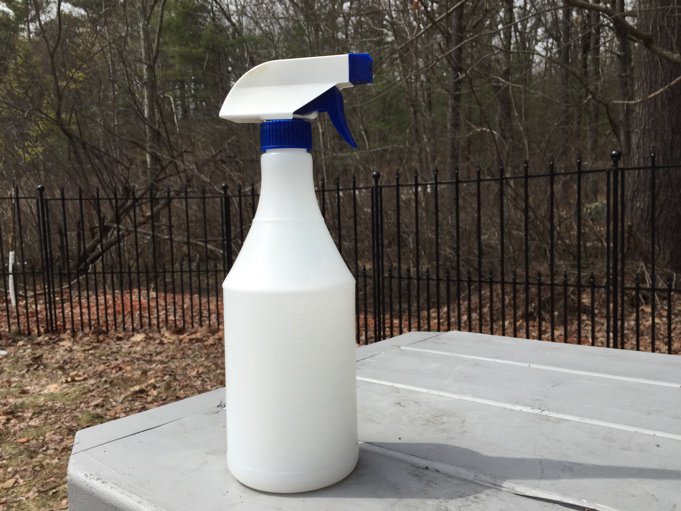
First, gather up a bunch of cardboard tubes. I use toilet paper rolls and paper towel rolls cut into 3 pieces. Most families can quickly gather enough to do the job, I usually place 24-30 tick tubes to cover roughly half an acre of usable yard space…
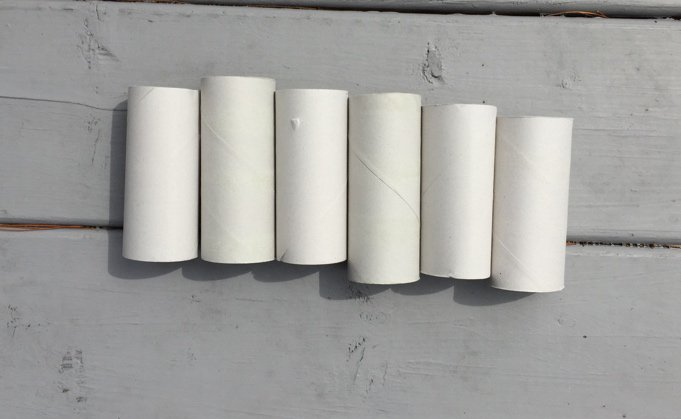
Before moving on to the Permethrin section, I recommend protecting yourself when handling any poison. So get some gloves and a mask, which hopefully you have on hand anyway.
Next, dilute the Permethrin. The instructions on my bottle of Permethrin SFR for reducing lawn tick populations call for 0.4-0.8 ounces of Permethrin to 4-25 gallons of water. That’s a huge range. Since it’s contained in the tubes and I want to ensure effectiveness, I opted for the high end of that given range.
Now, the spray bottle I’m using is only 20 ounces, a small fraction of even one gallon. When I did the conversion, it amounts to such a small quantity of Permethrin that it’s difficult to pour. Without going too crazy here, I found the easiest thing to do was to pour about 1/8 of an ounce into the sprayer with 20 ounces of water. Then you shake it up. This process makes a lot of diluted Permethrin. I made 30 tubes and still used only about an ounce of it…

Digging through the recyclables will get you a plastic container to use for treating the cotton. Just throw the cotton balls in the container and spray it with the Permethrin dilution using a spray bottle of some sort. Move the cotton around and make sure it’s well-treated…
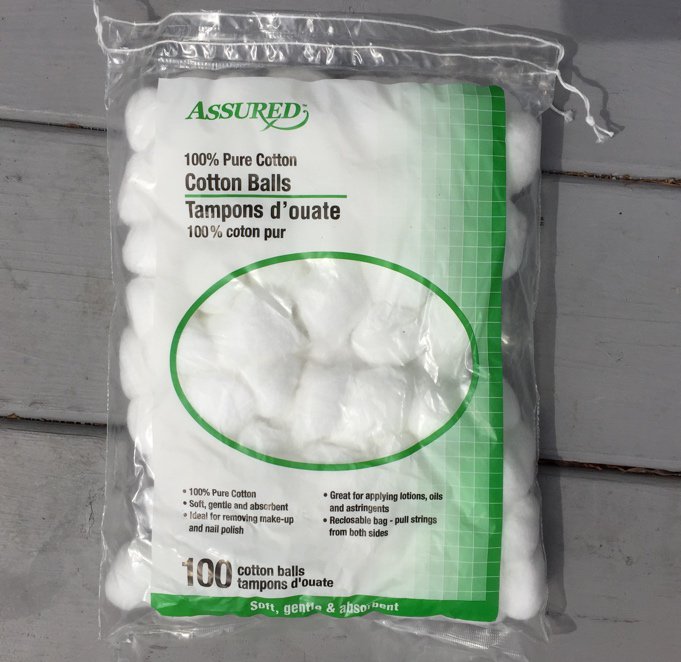
Here’s a little video that brings it all together:
Let the cotton air out for a while, then stuff the cotton balls into the tubes so they stay in the tube. Not super tight, just tight enough that they don’t fall out easily. Then spread them around the perimeter of your yard, a few feet past your yard line and spaced 10 feet apart from one another. The idea is to let mice get to them, so make sure they are on the ground and you can even give them a little cover.
Just in case you’re worried about what it might look like to have toilet paper rolls all over your yard, the photo below is of one of these tubes with a few leaves sprinkled over them.
View from the road…
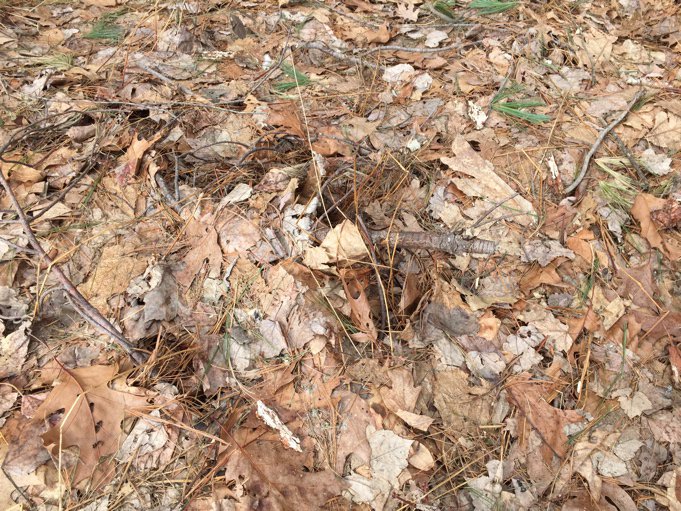
View from the woods. You can still barely see it…
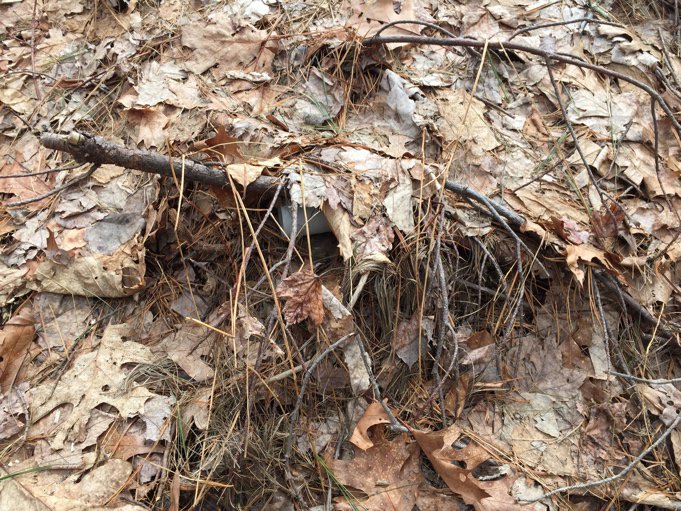
And that’s it! Save up your paper rolls all winter and come spring you’ll have all the ingredients you need to keep your family safe from Lyme Disease. Tick tubes are effective but it’s still just one tick killer for lawns, there are several. Use it as part of an overall tick defense strategy in areas where ticks are particularly concentrated (Via: OrganicDailyPost).
If you like this idea, be sure to share it with your friends and inspire someone you know. Anything becomes possible with just a little inspiration…
